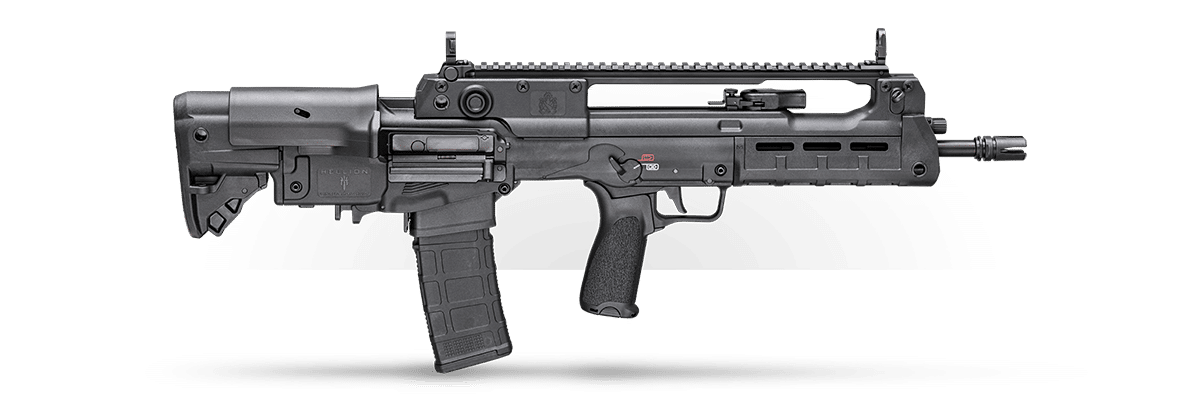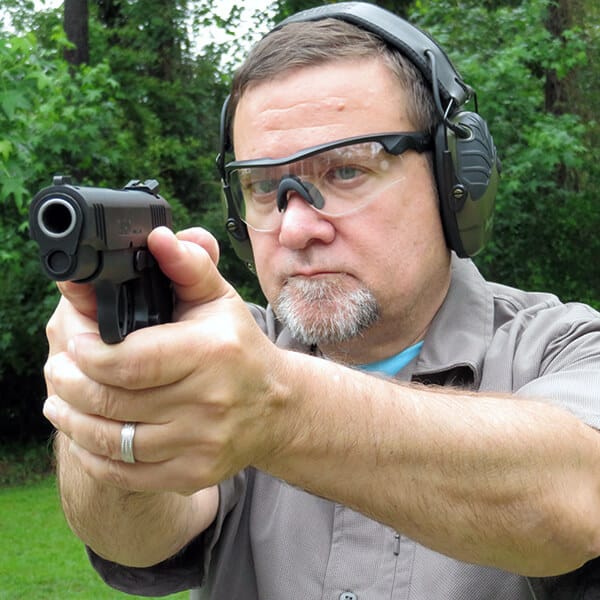What Is the Difference Between a Clip and a Magazine?
November 7th, 2023
7 minute read
Let’s clear the air on a topic that’s often a source of confusion, even among seasoned shooters: the difference between a magazine and a clip. It’s not just a matter of semantics; understanding the distinction is crucial for proper firearm terminology and, more importantly, for safe and effective gun handling.
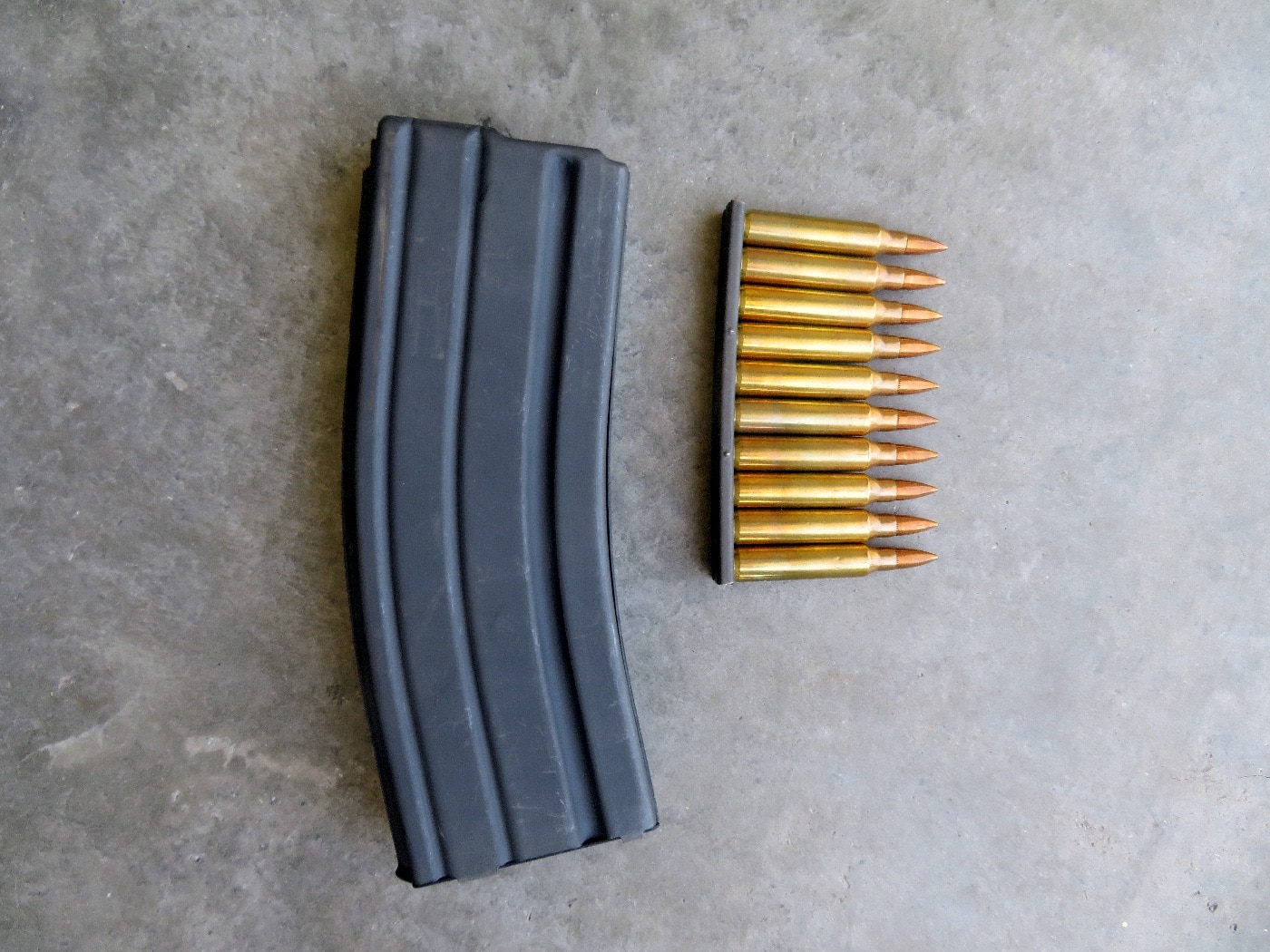
If you’re an old guy who served in World War II or Korea, you get a pass for calling a magazine a clip. If you are a new shooter and call a magazine a clip, you might get looks that range from exacerbation to downright distain.
Confused? Not a problem. Here we will explain what is the difference between a clip and a magazine in plain terms so that everyone can understand them and know the difference.
First, let’s talk about magazines.
What Is a Magazine?
In modern firearms, a magazine is a device that holds and feeds ammunition in a firearm. A magazine typically holds multiple rounds and is used in many kinds of firearms from semi-automatic pistols to bolt action rifles.
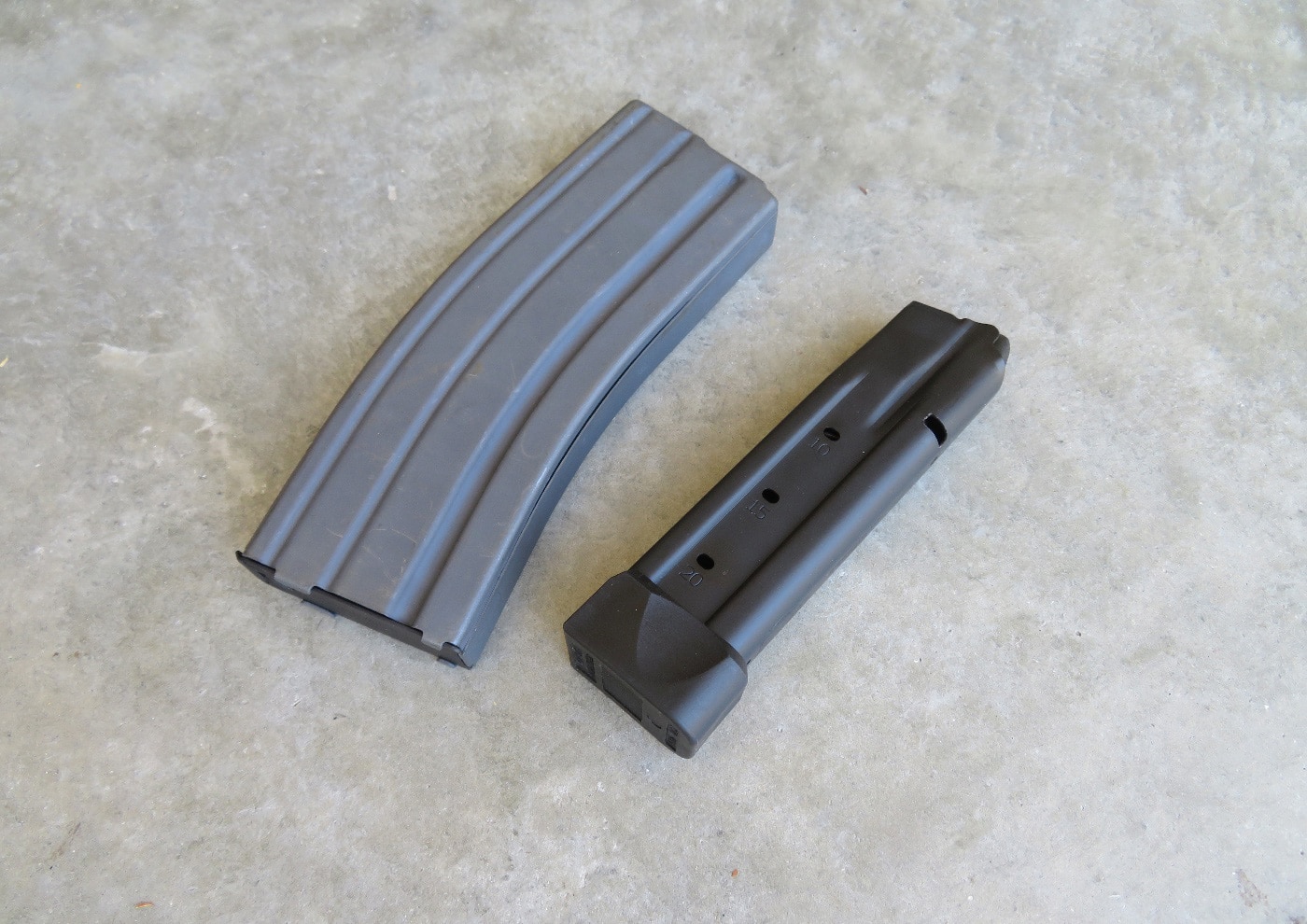
There is a second meaning that is somewhat archaic though it still has use in military and manufacturing contexts. Back in the day of loose powder, flint, leads balls and patches, a “magazine” was a place to store cannons, ammunition and explosives. Square rigger ships made of wood and canvas had magazines before deck in a secure area, and so did forts and defensive strongholds.
But, that’s not what we are talking about here.
Types of Firearm Magazines
Magazines come in a few different forms. There are detachable magazines like those used on AR-15 rifles, 1911 pistols and nearly every 9mm pistol ever produced. They are made of steel or polymer — and often a combination of both.
Cartridges are loaded into the magazine, the magazine is inserted into the firearm, and the firearm can be fired until the magazine is empty. That’s when you reload with an additional magazine, or remove the one from the gun and reload it with cartridges. These removable magazines are most common in pistols and semi-automatic rifles, and many bolt-action rifles use detachable magazines, too.
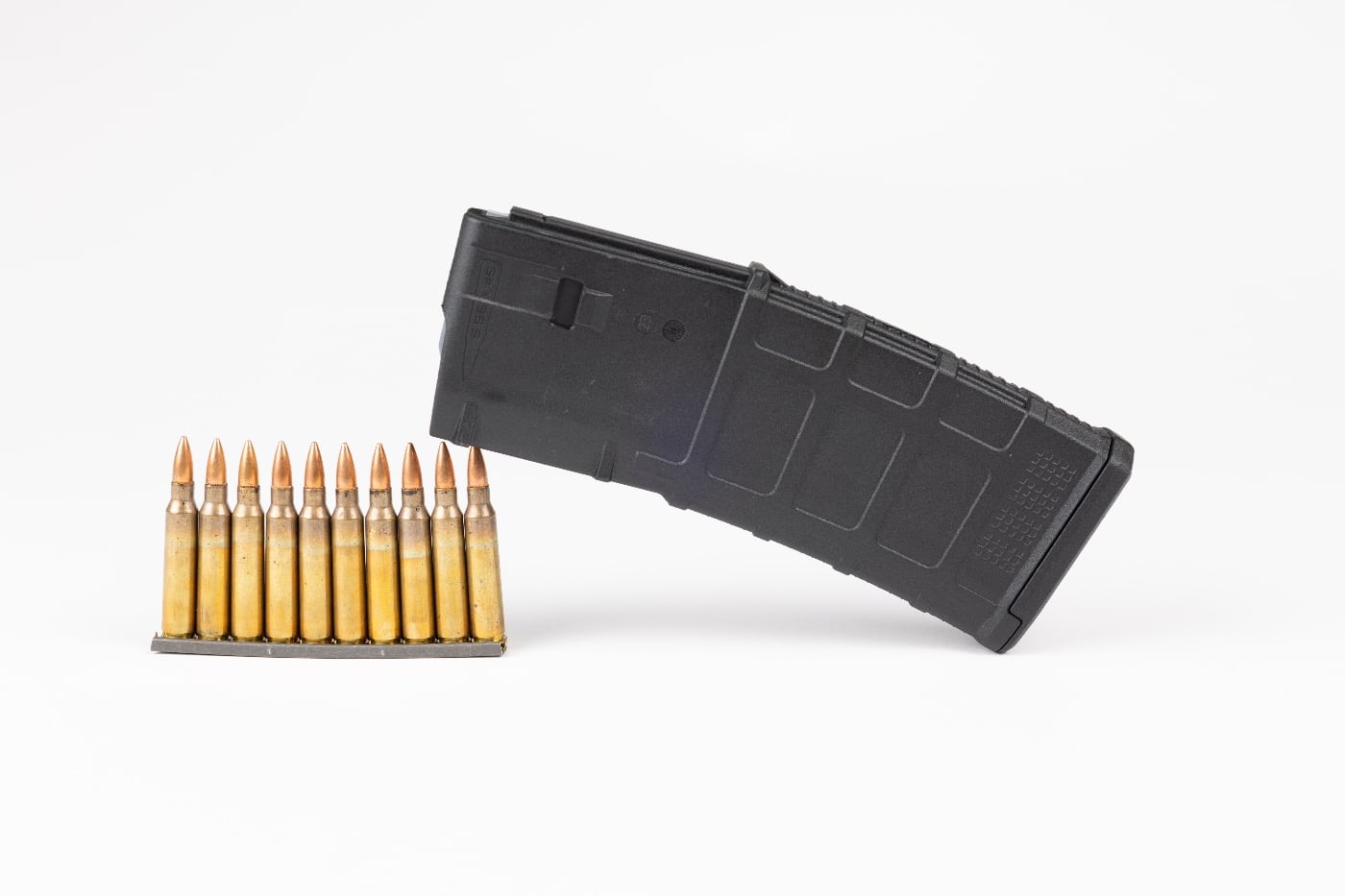
When talking about rifles, magazines are sometimes referred to as “box magazines” because they generally are shaped like — you guessed it — a box. Another type of rifle magazine is called a fixed magazine or internal box magazine. These are found in bolt-action rifles with a floorplate, and some without a floorplate. Cartridges are top-loaded, one-by-one in the internal box magazine and removed by either cycling the action or by opening the floorplate (if the rifle has one). Opening the floorplate dumps the cartridges on the ground.
Tube Magazines
Tube magazines are common on shotguns, lever-action rifles and some rimfire rifles. Rounds sit inside the tube, nose to base. As a result, these require round-nosed rifle bullets so as to not risk igniting the primer of the round in front of it under recoil (Hornady’s “LEVERevolution” ammo is a clever solution to this issue)
In these systems, the magazine tube is most often located under the barrel and loaded via a loading port on the tube. Many rimfire rifles are loaded this way. A loading gate in the side of the receiver is how most lever-action rifles are loaded. And for shotguns — pump-action and semi-autos — a loading port on the bottom of the receiver is most often used to load the shotgun. Like detachable and internal magazines, a spring puts tension on a follower so, as the action is cycled, a new round is ready to be loaded.
Anatomy of a Detachable Magazine
Now that we have an idea about the different types of magazines, let talk about the parts that make up a magazine. You already know a spring is involved. A detachable magazine is made up a few key parts that separate it from a clip.
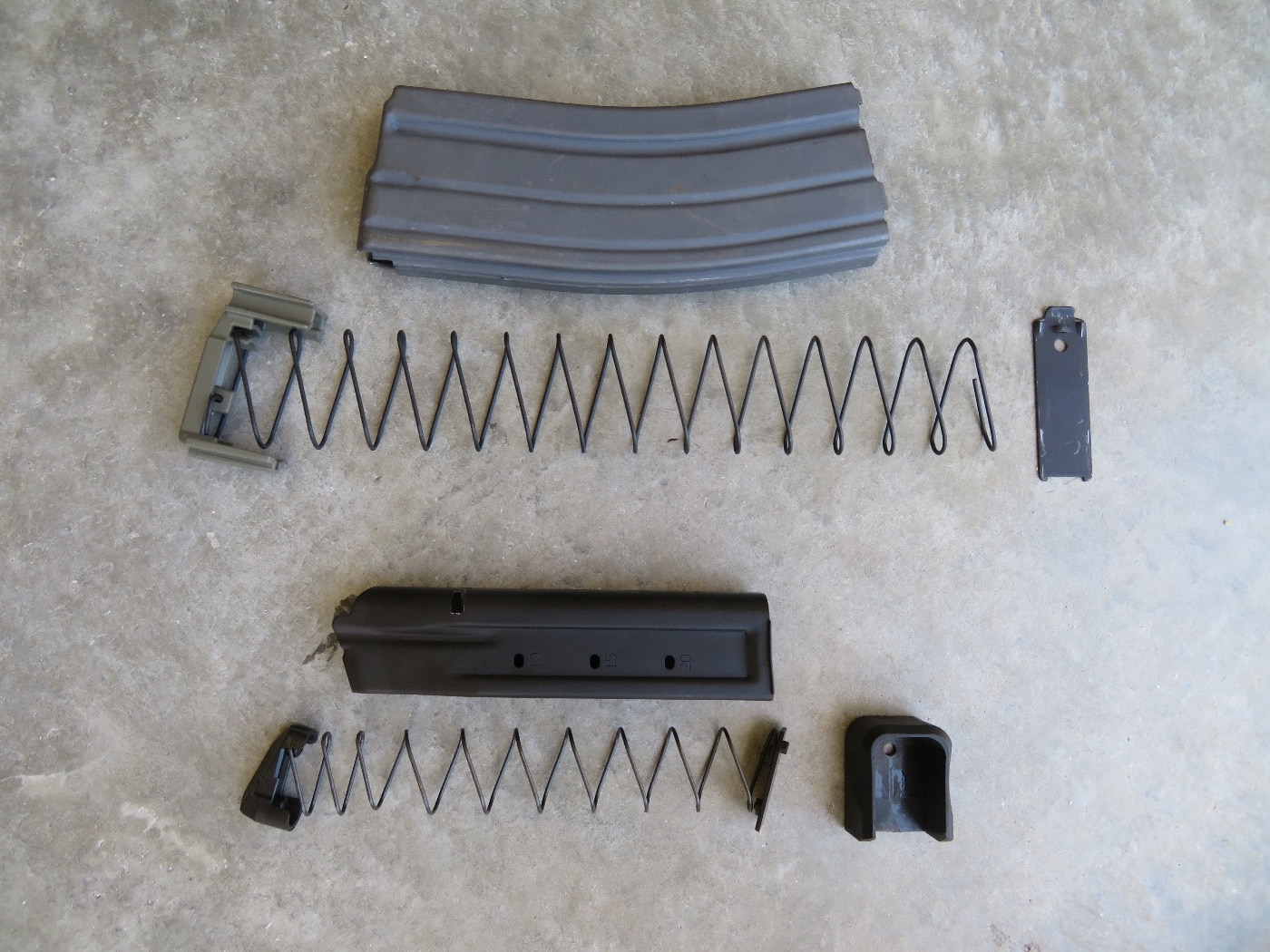
A magazine — either for a rifle or a pistol — has a body, spring, follower, floorplate retainer, and floorplate. All those components work with the firearm to fire the weapon. The magazine body holds the cartridges in a column while the spring exerts pressure and pushes up so, as the action cycles, the next cartridge is ready to be chambered.
The follower ensures the cartridge is properly oriented, and the floorplate retainer makes sure the floorplate stays in place and the rounds don’t fall out the bottom of the magazine. There is a little more to magazines than just that, but you get the gist.
What’s a Clip?
First and foremost, what sets a “clip” apart from a magazine is that the latter is required for a repeating firearm to operate for more than one shot. In most cases, a clip is not.
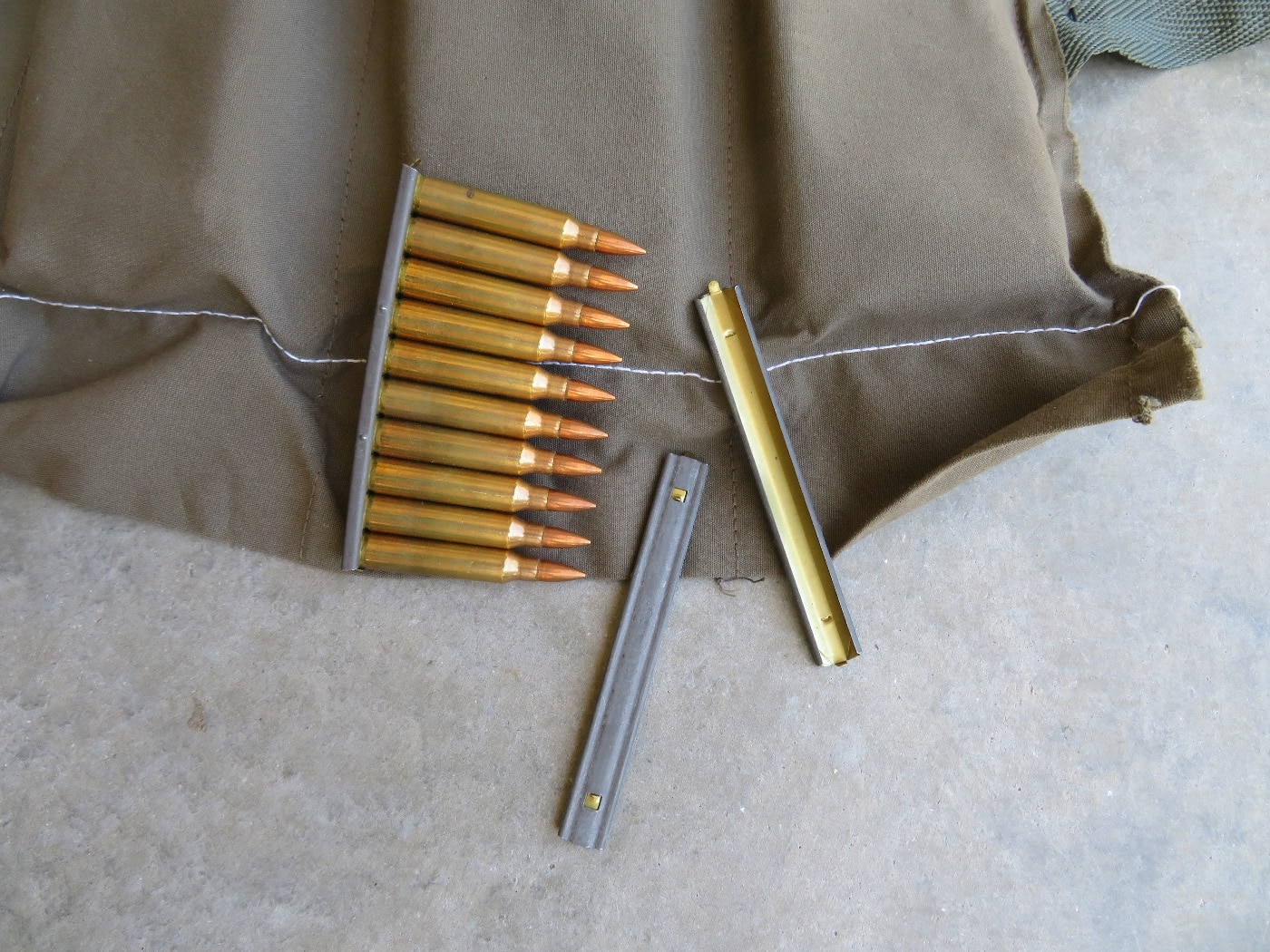
A “clip” holds cartridges together so they can be inserted into the magazine of a firearm. A clip is basically a strip of metal that holds cartridges. The clip is inserted into guide notches in the firearm receiver, and the user presses down on the cartridges to push the cartridges into the magazine and strip them off the clip. The clip is then tossed. Clips are also referred to as stripper clips (as you “strip” the rounds off of it into the magazine). I know, it can all be a bit confusing.
Clips or stripper clips have been used almost since bolt-action rifles were first invented. The German Gewher 88, the U.S. Enfield 1915 and Springfield 1903, and British Lee-Enfield bolt-actions rifles were all capable of being loaded via stripper clips. The Lee-Enfield in fact used a stripper clip to load a detachable box magazine.
Types of Clips
There are a few other types of clips. A moon clip and half-moon clip are clips that, in most cases, hold rimless semi-automatic pistol cartridges so they can be fired in a revolver. The clip holds the semi-auto cartridges in the revolver’s cylinder and act in place of the rim normally found on revolver cartridges.
A moon clip holds enough rounds to fill all the revolver chambers at one time, and a half-moon clip holds enough ammo to fill half a cylinder. These types of clips also make reloading a revolver as fast as reloading a semi-auto pistol.
And now we come to the en-bloc clip, which is different that a clip or stripper clip. This is most famously used in the M1 Garand rifle (to read all about this feature of the famed design, click here), and is designed in such a way that both the cartridges and the clip are inserted into the magazine. And, in the case of the Garand, the en-bloc clip is required to allow the rifle to fire more than just one round.
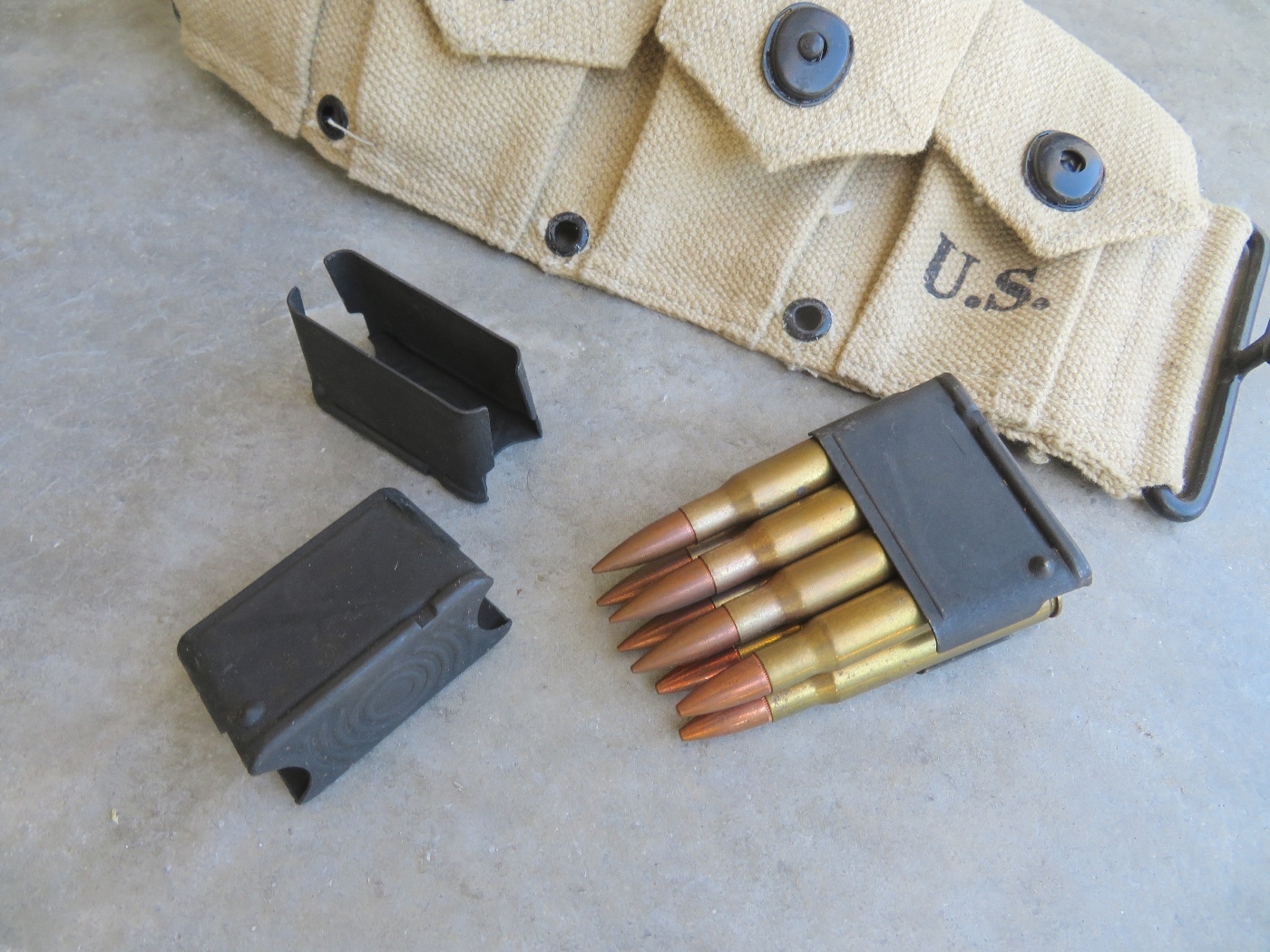
The M1 Garand was the main service rifle for U.S. soldiers in both World War II and the Korean War, and I think this is probably where the confusion between “clips” and “magazines” first arose. Many of those vets just used the terms interchangeably (and some of their other arms such as the M1 Carbine and the 1911 did use magazines), when in fact a clip and magazine are quite different. Movies and television shows in the 1950s did not help the matter.
Why the Difference Between a Clip and a Magazine Matters
There are tons of clip versus magazine memes, and I’m sure it can all be very confusing to new shooters.
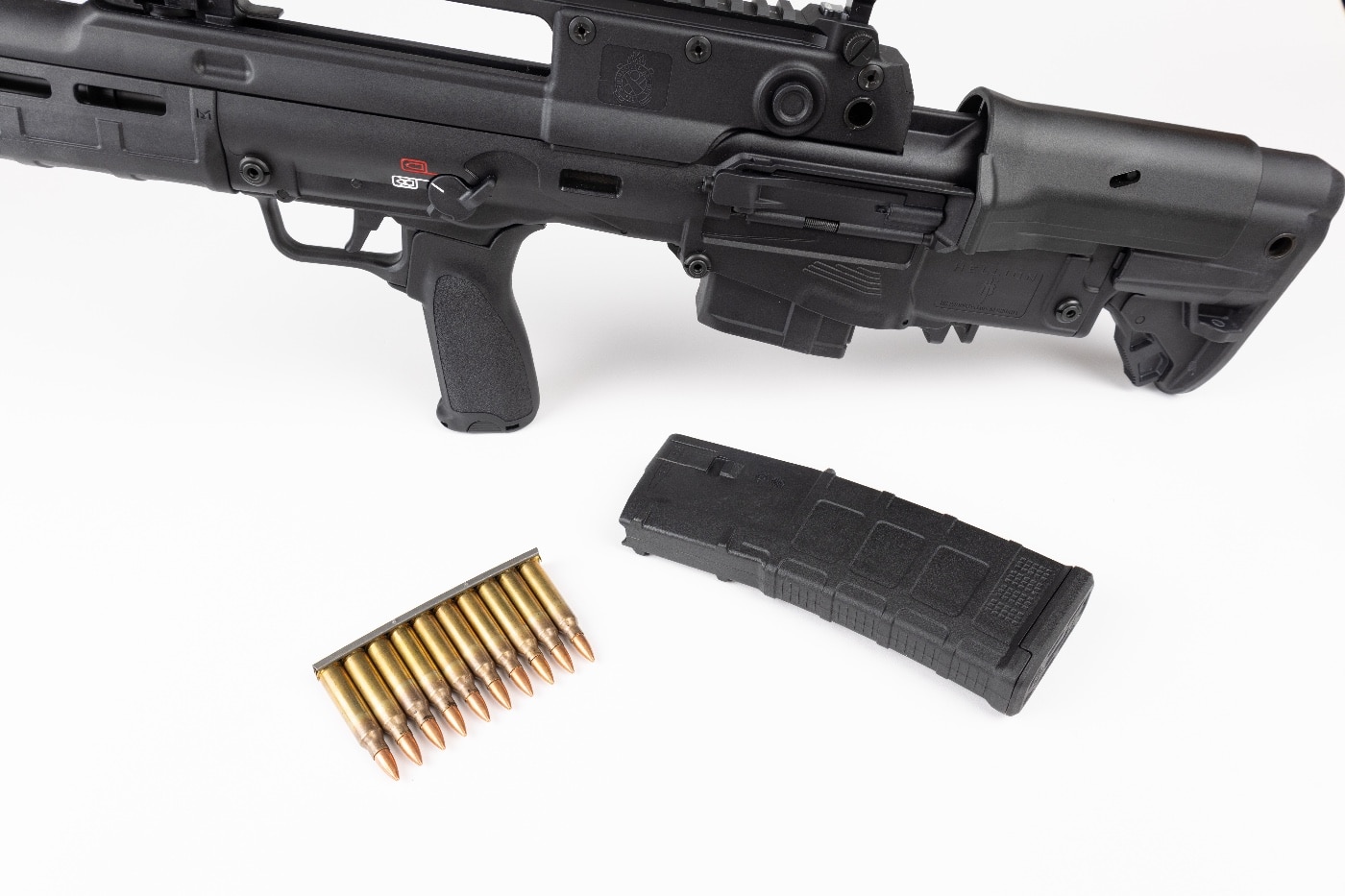
When you’re talking about loading rounds into a firearm, you’re typically using a magazine, whether it’s a box magazine for your SAINT rifle or the tubular magazine under the barrel of your classic .22 lever-action. If you’re using a device to load those rounds into a magazine, then you’re using a clip.
Remember, calling a magazine a clip is like calling the gas tank of your car the fuel pump; they’re both involved in getting the job done, but they have distinctly different functions and designs. In the world of firearms, precision in language reflects precision in practice. Keep your terminology as accurate as your shooting, and you’ll be in good company.
Editor’s Note: Please be sure to check out The Armory Life Forum, where you can comment about our daily articles, as well as just talk guns and gear. Click the “Go To Forum Thread” link below to jump in and discuss this article and much more!
Join the Discussion
Featured in this article
Continue Reading
Did you enjoy this article?

 71
71




